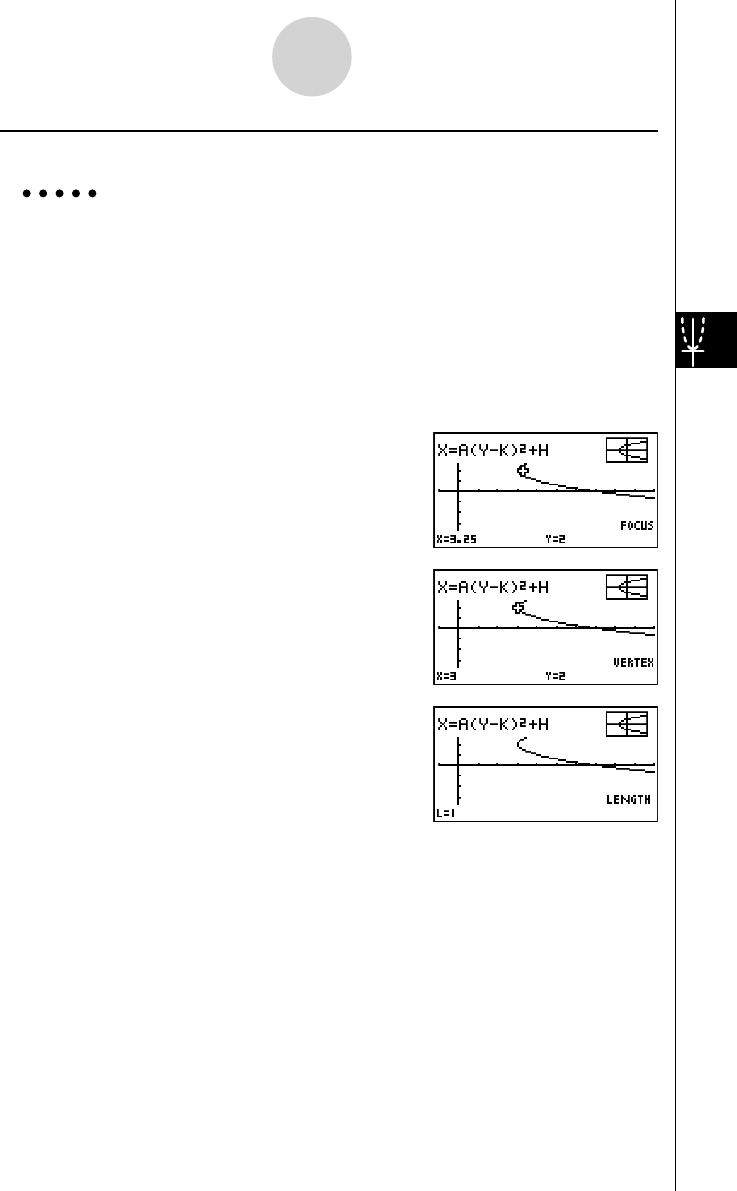User's Manual
Table Of Contents
- Quick-Start
- Precautions when Using this Product
- Contents
- Getting Acquainted— Read This First!
- Chapter 1 Basic Operation
- Chapter 2 Manual Calculations
- Chapter 3 List Function
- Chapter 4 Equation Calculations
- Chapter 5 Graphing
- 5-1 Sample Graphs
- 5-2 Controlling What Appears on a Graph Screen
- 5-3 Drawing a Graph
- 5-4 Storing a Graph in Picture Memory
- 5-5 Drawing Two Graphs on the Same Screen
- 5-6 Manual Graphing
- 5-7 Using Tables
- 5-8 Dynamic Graphing
- 5-9 Graphing a Recursion Formula
- 5-10 Changing the Appearance of a Graph
- 5-11 Function Analysis
- Chapter 6 Statistical Graphs and Calculations
- Chapter 7 Financial Calculation (TVM)
- Chapter 8 Programming
- Chapter 9 Spreadsheet
- Chapter 10 eActivity
- Chapter 11 System Settings Menu
- Chapter 12 Data Communications
- Appendix

20070201
u To calculate the focus, vertex and length of latus rectum
[G-SLV]-[FOCS]/[VTX]/[LEN]
Example To determine the focus, vertex and length of latus rectum for the
parabola X = (Y – 2)
2
+ 3
Use the following V-Window settings.
Xmin = –1, Xmax = 10, Xscale = 1
Ymin = –5, Ymax = 5, Yscale = 1
m CONICS
w
b w c w d w6 (DRAW)
!5 (G-SLV)
1 (FOCS)
(Calculates the focus.)
!5 (G-SLV)
4 (VTX)
(Calculates the vertex.)
!5 (G-SLV)
5 (LEN)
(Calculates the length of latus rectum.)
• When calculating two foci for an ellipse or hyperbolic graph, press e to calculate the
second focus. Pressing d returns to the fi rst focus.
• When calculating two vertexes for a hyperbolic graph, press e to calculate the second
vertex. Pressing d returns to the fi rst vertex.
• Pressing e when calculating the vertices of an ellipse will calculate the next value.
Pressing d will scroll back through previous values. An ellipse has four vertices.
5-11-18
Function Analysis










